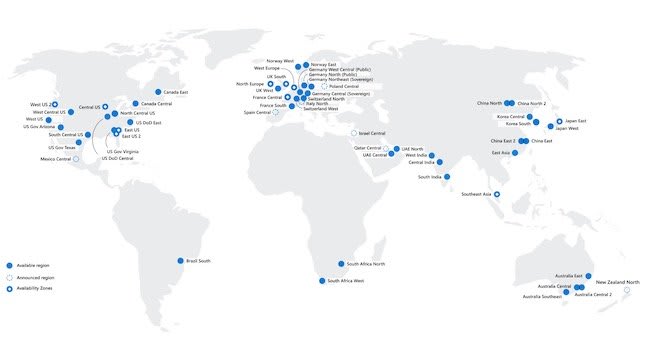Taking the AZ-900: Microsoft Azure Fundamentals Certification Exam is one of the great first steps in becoming proficient in the Azure Cloud. Those who take this exam will need a foundational understanding of the cloud in order to pass it.
Who takes the AZ-900? Well let's be honest, there's no "one type" of person that takes this exam because our world has more than one type of person, period. People in all different roles can take this exam in order to really show what they have been learning.
For example, if Terri is currently working in as a JavaScript Developer but wants to go "full stack," she may want to consider ways to improve their knowledge around how her code may be deployed into the cloud.
Ray may be working as part of a large Enterprise IT team that has decided that the cloud is the next step for their infrastructure. By educating himself around the information in the AZ-900 exam he can be better prepared on how to begin the process of migrating the company from a datacenter to the cloud.
Certifications aren't the end-all and be-all of your skills, but they provide your current or potential employers a way to verify you have a certain baseline of skills that will allow you to execute your job. Like any exam, you'll need to prepare as well. Whether it's books, practice tests, or self-guided education, it's going to be important to be ready for your test day!
This blog post will take a look at what the specific skills measured are in the AZ-900 exam and show you how to start training for all of these subjects for free on Microsoft Learn.
Skills Measured
The Azure Fundamentals Exam: AZ-900, skills measured guide provides you with a list of the skills measured. Let's take a look at them and discuss some important things you'll want to consider. As I mention the content below, I will link to key sections of the Azure Fundamentals Learning Path on Microsoft Learn.
Describe Cloud Concepts (15-20% of your grade)
This is the section where you're going to start defining the different benefits and considerations for using the cloud. You'll want to fully understand what cloud computing is, economies of scale, capex vs opex, and more. By following along with the Cloud Concepts - Principles of cloud computing module, you'll learn why companies have trusted Azure to build and secure applications for their customers.
This section will also want you to understand and define the following key concepts:
- Describe the benefits and considerations of using cloud services
- Describe the differences between Infrastructure-as-a-Service (IaaS), Platform-as-a-Service (PaaS) and Software-as-a-Service (SaaS)
- Describe the differences between Public, Private and Hybrid cloud models
As we close this first section, we'll note that this is highly conceptual. We simply need to begin understanding the basics before we can really dive in.
Describe Core Azure Services (30-35% of your grade)
This next section takes that next step in assuring you understand the components that make up the Azure Cloud. What do we do with those big IaaS and PaaS concepts we learned in the last module? How will we ensure the applications we build will remain durable in any situation? We'll need to determine what the different core services that Azure has and how they can be implemented.
If you want to build reliably with Azure, you're going to need to know how it's built from the ground up. By being prepared to explain what components like geopgraphies, regions, availabilty zones, and Azure Resource Manager do and how they work with your application is a critical portion of this section.
Here you'll learn what compute services you can run on Azure such as Containers, Virtual Machines, Azure SQL, disk storage and much more. You'll also get an idea of some other solutions you can integrate into your applications such as IoT, Azure IoT Hub or big data analytics.
You will also begin your first steps into Azure DevOps to start automating your deploys. You can learn how Azure App Service can integrate with Azure DevOps so you'll always trigger a new build and deployment of your application whenever new changes are pushed to your code repository.
You'll also need to understand how to begin working with Azure with the various management tools provided. You'll learn about using PowerShell, Azure CLI, ARM Templates, and the Cloud Shell. All tools that let you get things done with Azure.
This section will want you to understand and define the following:
- Describe the core Azure architectural components
- Describe some of the core products available in Azure
- Describe Azure management tools
Describe Security, Privacy, Compliance, and Trust (25-30%)
Here's where we talk about the most important thing for your customers, security. No one wants their data made public, no company wants their customer's privacy leaked, and no one wants their applications vulnerable to attack. This section of the AZ-900 exam helps you prove your knowledge around the services and methods used on Azure to secure applications and infrastructure. You'll also learn about the encryption methods, identity, and certificates that make up Azure.
This section will go over virtual network concepts such as Network Security Groups (NSG), Application Security Groups (ASG), Firewalls and Azure DDoS protection. You'll learn how to choose an appropriate security solution and even learn about User-Defined Rules for Azure. You'll understand the shared responsibility model and how it impacts your infrastructure decisions when using Azure. We'll also understand concepts of governance, monitoring, and regulatory compliance within Azure.
Our Skills measured on this portion of the exam are:
- Describe securing network connectivity in Azure
- Describe core Azure Identity services
- Describe security tools and features of Azure
- Describe Azure governance methodologies
- Describe monitoring and reporting options in Azure
- Describe privacy, compliance, and data protection standards in Azure
We're one step closer to the final section of our exam skills list. So close to being AZ-900 champions!
Describe Azure Pricing, Service Level Agreements, and Lifecycles (20- 25%)
This is where we start really concerning ourselves with how our money is spent, how we protect ourselves if there's an Azure failure, and the lifecycle of a service on Azure.
Here's the section where we'll begin discussing how subscriptions are used on Azure to set up your billing for each part of your business. We'll also begin looking at what your new free account can do!
Money Money Money... You're going to want to save money! You'll need to get a full understanding on the TCO Calendar, best practices on cost savings, and the Azure Cost Management service.
This section will want you to understand and define the following:
- Describe Azure subscriptions
- Describe planning and management of costs
- Describe Azure Service Level Agreements (SLAs)
- Describe service lifecycle in Azure
This all shows you understand not only how to deploy on Azure, but how you get the most out of your money.
You've got a great list of information and links about the skills you should have prepared before taking the AZ-900 Exam. With the Azure Fundamentals Learning Path on Microsoft Learn, you'll be well on your way to getting that AZ-900 badge on your LinkedIn account.
I hope you enjoyed reading this, and remember that you can learn even more Azure Fundamentals on AzureFunBytes every Thursday at 2PM NYC Eastern Time.
AzureFunBytes! - Byte-sized content with a live Twitch show!
Learn about Azure fundamentals with me!
Live stream is available on Twitch at 2 pm EDT Thursday. You can also find the recordings there as well.
https://twitch.tv/azurefunbytes
https://twitter.com/azurefunbytes
Join me, ask questions, and learn about Azure!
Microsoft Learn: Azure Fundamentals
Microsoft Azure: $200 Free Credit








Top comments (1)
Nice 😄, timely post, Will be doing this soon.